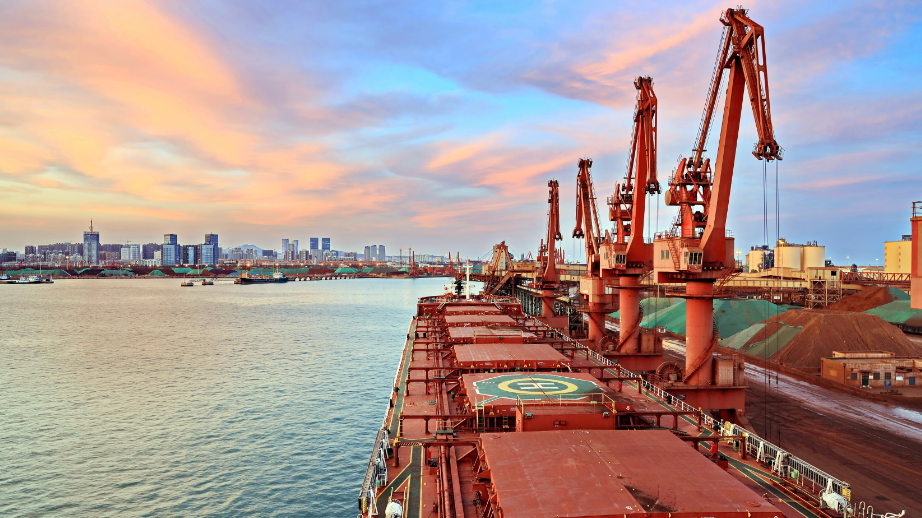Russell: Iron ore and China steel output aren’t sticking to the script

(The opinions expressed here are those of the author, Clyde Russell, a columnist for Reuters.)
The China steel and iron ore market narrative for 2021 was supposed to be pollution-led curbs on steel output, coupled with rising iron ore supply, leading to lower prices.
Neither is happening.
The world’s three biggest iron ore miners all reported lower production in the first quarter of this year compared with the last quarter of 2020.
China’s steel output rose to 94.02 million tonnes in March, the highest since August 2020 and at 3.03 million tonnes per day, it was above the daily average of 2.97 million tonnes in the first two months of the year.
It’s therefore unsurprising that spot iron ore prices for delivery to north China, as assessed by commodity price reporting agency Argus, reached a decade-high of $188.70 a tonne on April 22, before easing slightly to end at $185.60 on Wednesday.

The high price of iron ore, as well as strength in China’s domestic steel prices and profit margins for mills, has prompted some official concern. Beijing’s industry ministry went so far as to say on April 20 that it would take steps to stabilise raw material prices.
The ministry will work together with relevant departments to fend off panic buying or hoarding, and “resolutely” crack down on market monopolies and malicious speculation, Ministry of Industry and Information Technology spokesman Huang Libin said, without elaborating.
At times of elevated prices in the past, the authorities have tended to make it more expensive to trade positions and have used what could be referred to as unofficial powers of persuasion to calm markets.
What remains to be seen is whether this will actually result in lower steel output, or whether the current high profits for producers – built on the back of strong demand amid stimulus spending on infrastructure and construction – will win out.
Effectively, it may come down to a choice for policymakers: curb steel production in order to limit pollution and accept a small hit to economic growth, or allow steel output to rise to meet the needs of robust economic growth.
Iron ore output to gain
On the supply side, it’s clear that iron ore miners have been unable to ramp up production to meet demand from China, which buys around 70% of seaborne volumes.
This isn’t really the fault of the major miners, with weather issues hampering production in top exporter Australia in the first quarter, and maintenance at a major mine in number two shipper Brazil.
Overall, if these top producers are able to meet their targets, it does suggest that the tightness seen in the first quarter in the seaborne iron ore market may ease
Rio Tinto, currently the world’s biggest iron ore producer, reported quarterly output of 76.4 million tonnes for the three months ended March, down 11% from the previous quarter and 2% below the level of the same quarter in 2020.
However, the company maintained its guidance for total shipments of between 325 million and 340 million tonnes of iron ore in 2021 from its operations in Western Australia state.
BHP Group, Australia’s second-largest exporter, produced 66.7 million tonnes of iron ore in the January-March quarter, down 5% from the prior quarter and 2% lower than in the same quarter a year earlier.
The company said it expects output for the full fiscal year to June 30, 2021, to be at the upper end of its 245 million to 255 million tonnes range.
Brazil’s Vale reported first-quarter production of 68.05 million tonnes, down 19.5% from the fourth quarter but up 14.2% from the same quarter in 2020.
The company blamed maintenance work at its S11D mine for the drop from the December quarter, and it also kept to its 2021 production guidance of 315 million to 335 million tonnes.
This means Vale will have to up its production significantly in coming quarters to meet its target.
Rio will also have to step up output to meet its target, though not nearly as much as Vale, while BHP is on track to meet its target.
Overall, if these top producers are able to meet their targets, it does suggest that the tightness seen in the first quarter in the seaborne iron ore market may ease by the second half of the year.
Coupled with an expectation that China will ease back on the stimulus throttle and enforce pollution-led curbs on steel output, the outlook should be that iron ore prices start to moderate.
But – and it’s a big but – there is no clear evidence any of this is actually happening.
(Editing by Kenneth Maxwell)
More News
{{ commodity.name }}
{{ post.title }}
{{ post.date }}



Comments